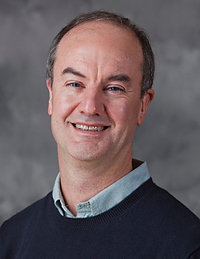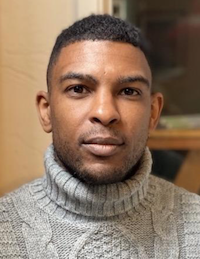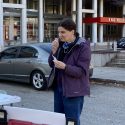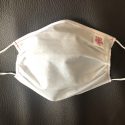Research aims to give everyone a fair shot at accessing COVID-19 vaccines
Mathematical models have helped the U.S. optimize COVID-19 vaccine allocation and delivery to boost vaccination rates. But these models have not overcome the existing health disparities that stem from unequal access to health care, discrimination, and gaps in education, income and wealth attainment.
Ensuring that economically and socially vulnerable populations have access to vaccines, no matter where they live, is a central idea behind vaccine fairness.
“There’s a missing step between the mathematics and the reality,” says Michael Ferris, John P. Morgridge Professor of Computer Sciences at the UW–Madison School of Computer, Data and Information Sciences. “You can solve problems with mathematics up to the last mile, but at that point behavior, communication and socioeconomic issues become critical.”
Ferris and Corey Jackson, assistant professor at the UW–Madison Information School in CDIS, are developing a vaccine fairness recommendation engine that will support equitable decision making about vaccination. Their work will inform the Wisconsin Department of Health Services and community groups’ efforts to address vaccine access and hesitancy, with the ultimate goal of increasing immunization rates.
Jackson researches the growing field of citizen science, where amateur volunteers collect data for scientific research. He studies how people learn how to use online citizen-science tools and what motivates them to contribute to research. This linking of technology and human behavior has helped guide his thinking about fair access to vaccines.
“Access is not just being within five miles of a vaccination site,” says Jackson. “It also means, do you have the ability to take off work to go and get the vaccine? Does the location that’s closest to you actually have appointments available? If you speak Spanish at home, is the app for making appointments translatable?”
In some rural Wisconsin counties, vaccine access is limited by the fact that there may be few hospitals, clinics and pharmacies equipped for vaccination.
Another challenge with modeling vaccine fairness is that people don’t necessarily get vaccinated in their own communities. In Wisconsin, this was particularly true prior to mid-April when the COVID-19 vaccine supply was constrained. While allocation models were designed to fairly distribute vaccine to vulnerable communities, affluent people were sometimes traveling long distances to get vaccinated in those places.
The team’s work will inform government and community groups’ efforts to address vaccine access and hesitancy, with the ultimate goal of increasing immunization rates.
Jackson was researching social and technological barriers to people’s participation in COVID-19 contact-tracing efforts when he arrived at UW–Madison during the early months of the pandemic. He connected with Ferris through the American Family Insurance Data Science Institute’s COVID-19 Research Group, which was developing models and advising decision-makers on the best use of data about the pandemic.
The modeling efforts of the COVID-19 Research Group caught the attention of the Society for Medical Decision Making through a collaboration with Johns Hopkins University. Jackson recently received financial support for his work from its COVID-19 Modeling Accelerator.
This summer, Jackson and Ferris are looking at challenges people face in getting vaccinated. They are assessing whether or not existing vaccine allocations adhere to standards of fairness by measuring whether geographic areas identified as socially vulnerable by the Centers for Disease Control and Prevention are receiving fair allocations of vaccines.
They will then catalog interventions across the U.S. aimed at increasing equitable access to vaccines and measure how well these interventions are working in Wisconsin. Mobile vaccine units are one such intervention. In Milwaukee, the city teamed up with the Wisconsin National Guard to create mobile units that aim to address racial disparities in vaccination.
In order to gauge the effectiveness of these interventions, Jackson and Ferris will look at the number of people vaccinated in census tracts across Wisconsin to learn if more people are vaccinated in communities where specific interventions happened.
Jackson is optimistic this work will address the limitations in current vaccine models and validate effective strategies to get resources to people who need them most.
“I think we’ll have a better idea about what fairness in medical or health decision making looks like,” says Jackson. “My hope is this work will provide useful information for decision-makers moving forward.”
Tags: computer science, covid-19, health, research





